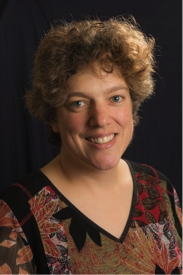
Chair: Hon Michael Ferguson MP, Minister for Information Technology and Innovation
Probing the Earth with sparse data with Associate Professor Anya Reading, UTAS
The continents, ocean floor and the Earth’s mantle beneath provide the dynamic foundation for all life on Earth. This foundation is surprisingly variable but it is difficult to study for the simple reason that it is buried – and deeply buried. We have strong motivations for better understanding the 3D deep architecture of the Earth, and how the tectonic plates move in dramatic or subtle ways, because this underpins many global studies including ice-sheet and sea-level changes. On a more local scale, 3D deep Earth images help us identify likely locations for buried resources such as minerals and geothermal power. We can only drill a few kilometres of the nearly 6,400 kilometres from the Earth’s surface to the centre of the Earth’s core so we need to use a combination of geophysics data collection and innovative computing to find out more. Using uncertainty is a key part of the process. In some cases mapping uncertainty has an upside which we can use to our advantage. This talk explains how we collect data from remote places, and make best use of this sparse information to improve our knowledge of the least accessible, yet very relevant, parts of our planet.
Embracing uncertainty in molecular evolution with Associate Professor Barbara Holland, UTAS
We are used to thinking of DNA as an instruction set that carries the genetic information for making living things. However, we can also think of it as an historical “document” that keeps a surprisingly useful record of who’s related to who in the Tree of Life. By looking at patterns of similarity in the DNA of different species, scientists have been able to develop an accurate picture of the evolutionary tree that links present day species. (Amongst other things, we can give a definitive answer to the age-old question – What came first, the chicken or the egg?). We can also use DNA as a “clock’’ – the ticking of this molecular clock is random rather than regular but in combination with fossil evidence it allows us to put dates on when particular species diverged. For instance, does the molecular clock suggest that mammals and birds arose 65 million years ago in the dust of the asteroid that wiped out the dinosaurs, or does it suggest that they were around for a lot longer, potential contributors to the dinosaurs’ demise?
Reading the evolutionary story in DNA has required a long-standing collaboration between biologists and mathematicians. In this talk Barbara hopes to share a little piece of this story.
MORE INFORMATION
